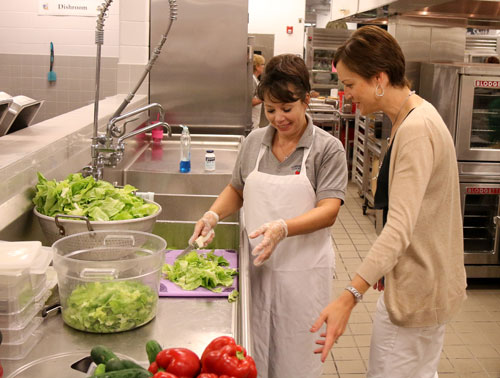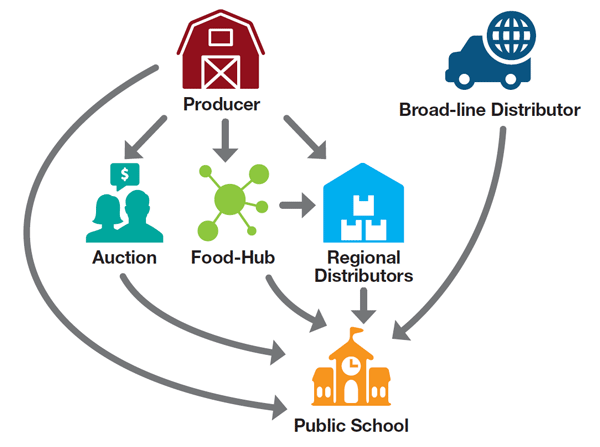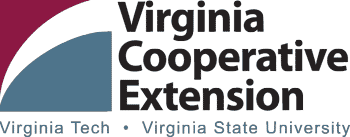Accessing Virginia’s Markets: Public Schools (K-12)
- Introduction
- Survey Findings
- Purchasing Priorities & Barriers
- Recommendations
- Producer Checklist
- Helpful Resources
Introduction
 Similar to hospitals, public schools have contracts with vendors already set in place. Like college and university students, children in public schools can also put money towards a “meal plan”. Most public schools offer both breakfast and lunch and change the menu weekly. A growing number of schools are gradually transitioning from pre-made foods to more fresh, scratch cooked options. Given the emphasis on fresh fruits and vegetables, there is an opportunity for local growers to gain greater access to public school systems. According to the Virginia Department of Education, there are currently 1,822 K-12 schools in Virginia as of the 2017-2018 school year. The USDA has been encouraging school districts to use locally-produced foods in school meals and to use "farm-to-school" activities to spark students' interest in trying new foods. In an article published by NPR, they mentioned that more than a third—36 percent—of U.S school districts reported serving local foods in the 2011-12 or 2012-13 school years. Buying local became more feasible with federal legislation that passed in 2008 as well as 2010, when the U.S. Department of Agriculture created the Farm to School program to get more healthful food in schools and link smaller U.S. farmers with a steady market of lunchrooms.
Similar to hospitals, public schools have contracts with vendors already set in place. Like college and university students, children in public schools can also put money towards a “meal plan”. Most public schools offer both breakfast and lunch and change the menu weekly. A growing number of schools are gradually transitioning from pre-made foods to more fresh, scratch cooked options. Given the emphasis on fresh fruits and vegetables, there is an opportunity for local growers to gain greater access to public school systems. According to the Virginia Department of Education, there are currently 1,822 K-12 schools in Virginia as of the 2017-2018 school year. The USDA has been encouraging school districts to use locally-produced foods in school meals and to use "farm-to-school" activities to spark students' interest in trying new foods. In an article published by NPR, they mentioned that more than a third—36 percent—of U.S school districts reported serving local foods in the 2011-12 or 2012-13 school years. Buying local became more feasible with federal legislation that passed in 2008 as well as 2010, when the U.S. Department of Agriculture created the Farm to School program to get more healthful food in schools and link smaller U.S. farmers with a steady market of lunchrooms.
Survey Findings
This market sector represented the highest response rate of any sector surveyed, perhaps because of established farm-to-school programs across the state and the likelihood that school nutrition directors are more aware of food safety concerns due to the population they serve. Although the Public School market sector operates under significant constraints in terms of pricing and logistical challenges, it is a sector with significant growth potential for Virginia farms since many school systems make it a priority to spend commodity money on fresh fruits and vegetables. While accessing this market largely depends on the size and policies of a particular school system, more than half of respondents indicated that they would increase local purchasing of produce if food safety requirements were met, representing an area of opportunity for Virginia producers.
In particular, focus group participants mentioned the USDA pilot procurement program, designed to increase procurement of local produce in schools, but they faced challenges due to a lack of approved suppliers, who would need to meet Good Agricultural Practices (GAP) certification requirements in order to participate. Thus, the primary channel for school produce procurement is through distributors, since they handle both logistical hurdles, as well as food safety verification. For those schools buying direct from growers, fulfillment of food safety expectations varied widely from verbal assurances to written agreements to document reviews to site visits to third party food safety audits. Thus, while not all schools may require food safety certification at this point in time, there is increased pressure to do so, and those producers having GAP certification tend to gain greater access to selling their produce.
Purchasing Priorities & Barriers
Priorities
- Quality
- Availability
- Delivery Capabilities
- Price
- Food Safety Certification
Barriers
- Cost of Product
- Delivery Capabilities (Timing, Flexibility, etc.)
- Lack of Intermediaries (Food Hubs, etc.)
- Insufficient Volume of Product
- Grower Lack of Understanding of Buyer Requirements
- Product Consistency
- Corporate Requirements/Policies
- Be aware of the size of the school district and the amount of flexibility they may or may not have to procure locally sourced products. Smaller school districts are generally easier to tap into.
- Establishing and fostering relationships with school foodservice staff is vital, because they will be aware of the school system’s budget and how much is allotted for local food procurement. They will also know about Federal regulations that dictate the bidding process to ensure free and open competition between vendors.
- Recognize that food safety certifications like GAP may be mandatory for accessing some school systems, whereas other schools may be more flexible. While having a written food safety plan in place is a great idea, at a minimum, you should be able to effectively communicate the food safety practices you have in place. Demonstrating your awareness of the importance of food safety is critical!
- Be aware that comprehensive liability insurance may also be a necessity in this market.
- Work with schools in close proximity to your farm to mitigate issues related to delivery and low-volume orders. Understand that consistent delivery of your product to the school is important to maintaining a good working relationship.
- Be open to selling to a local food hub or distributor, who may already have a business relationship with the school system.
- Be aware that schools struggle to find fresh produce during the school year, and they may have limited storage and cooking options. Season extension could be a way to open up some opportunities with schools.
- Be willing to join in-school events during Farm to School Week, fresh fruit/vegetable program, or at other times.
- Explore whether schools / PTOs in your area have, or are interested in establishing, a “snack-program” where fresh fruits and vegetables are provided to students. There may be grant funding or PTO funding available for this type of program.
- Consistent communication with your prospective buyer is critical to your success as a local producer.
- The bottom line is that while food safety certification may not be a firm requirement, farms wanting to increase their reach and impact in school settings should consider taking the extra steps toward certification, in order to broaden their markets and, more importantly, to provide more avenues of distribution through traditional and non-traditional distribution chains.
- What is the size of the school system?
- Is the school open to sourcing locally produced food? If so, do you know who to contact to explore possibilities for being a vendor?
- Does this school system have programs, such as Thanksgiving, Farm-to-School month celebrations, or fresh fruits and vegetable initiative, which may open up opportunities for selling produce from your farm?
- Do you need a 3rd party food safety audit, such as Good Agricultural Practices (GAP) certification in order to sell your product to the school system?
- Are there are other food safety requirements such as needing to have a HACCP (hazard analysis and critical control point) plan implemented in your operation?
- Is a minimum level of liability insurance required?
- Are you able to offer consistent and reliable delivery to the school system to meet their needs and timing?
- Are there regional food-hubs or other intermediaries that might have established working relationships with the school system, that would alleviate possible logistical issues such as transport or meeting volume needs?

Helpful Resources
Accessing Virginia’s Public School (K-12) Market Sector: Fresh Produce Food Safety Considerations Factsheet
National Public Radio
Why Some Schools Serve Local Food And Others Can't (Or Won't) news story.
USDA ERS National School Lunch Program
ERS research found that offering school lunches with a healthier mix of vegetables, as required by new standards, was associated with higher consumption of these healthy foods.
USDA Farm to School Planning Toolkit
Excellent guide for providing designing a robust farm to school program.
USDA Farm to School Program
Provides resources on a wide range of topics, including food safety resources that are frequently accessed by food service professionals at school systems across the country.
USDA GAP/GHP Audit Program
A voluntary audit program to verify that fruits and vegetables are produced, packed, handled, and stored as safely as possible to minimize risks of microbial food safety hazards.
USDA Pilot Procurement Program
A pilot program farms and school systems can sign up for that supports the use of locally-grown foods in school meal programs using entitlement funds.
Virginia Department of Education
Virginia Department of Education statistics on local regional schools and sectors for 2017-2018.
Virginia Farm to School Program
A program within the VA Dept. of Agriculture to cultivate market opportunities, and increase the volume of locally grown foods served in schools at all levels of education.
Virginia Farm to School Resource Guide
A toolkit with research-based information, resources, and advice to support the development of farm to school connections and procurement.
